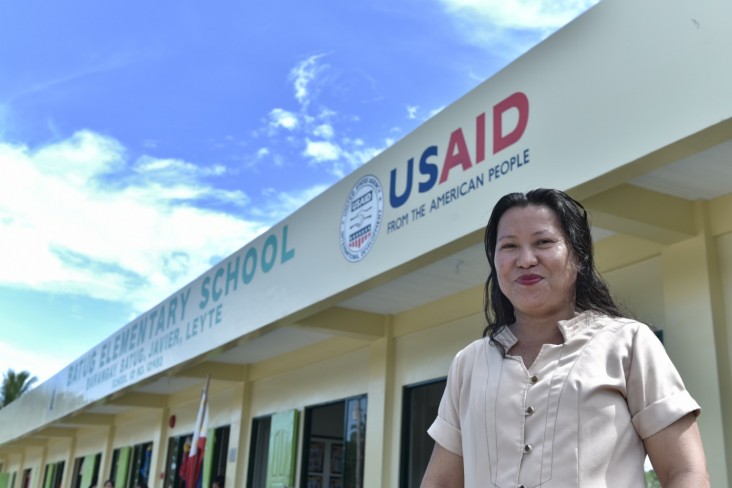
January 2017—Rowena Dulfo has devoted herself to teaching for almost 25 years. In addition to being a parent of four children, she serves as a mentor and second mother to hundreds of elementary pupils at the Batug Elementary School in Leyte province in the central region of the Philippines.
She loves to teach and to pass on knowledge to young minds, but the school was prone to floods, which disrupted lessons and access to the campus.
“We've always been wary of the rainy season. Even light rains cause flooding,” says Dulfo. “A day’s worth of rain meant that we’d have to suspend classes for a week.”
The teachers and students had to make up for the missed classroom time on weekends. People became accustomed to this routine. They would joke that the school should offer swimming lessons when it flooded.
Then came Typhoon Haiyan, the strongest typhoon to make landfall in recorded history.
Dulfo recalls the day in 2013 when the super typhoon tore through Leyte and the central region of the country. “We were not prepared. We were submerged. Classrooms, desks, books … they were all ruined,” she says.
The Philippine Department of Education reported that at least 90 percent of the schools in the region were either damaged or totally destroyed by the typhoon.
USAID’s Rebuild activity, in partnership with the Philippine Government, began reconstructing schools and medical centers to restore social services in the region.
USAID and its partners reconstructed Batug Elementary School so that classes could resume. But they also sought to build better, stronger, weatherproof structures that would allow classes to continue even in times of flooding. This required that 2,500 cubic meters of land be elevated by 2 meters to keep the school from flooding. The elevated land was reinforced by a retaining wall to reduce erosion, and a drainage system was installed to direct water flow away from the school.
The new six-classroom school was built to withstand winds of up to 224 miles per hour, protecting it from future typhoons. The structure was also built to weather earthquakes registering up to 8.0 on the Richter scale.
On Nov. 18, 2016, the classrooms—furnished with books, desks and other supplies—reopened. Not long after, a torrential downpour hit the area. Safe and dry inside her classroom, Dulfo continued to teach without having to evacuate and postpone classes.
“Words are not enough to express our gratitude,” says Dulfo. “We'll continue to shape these children into productive members of society. That is our way of showing gratitude.”
The six classrooms in the Batug Elementary School are among the 310 classrooms constructed by USAID at 51 schools in the Eastern Visayas region. The U.S. Government has provided $143 million in assistance to support the relief, rehabilitation and reconstruction in the areas affected by Typhoon Haiyan.
LINKS
Follow @USAID_Manila, on Facebook, on Flickr, on YouTube







Comment
Make a general inquiry or suggest an improvement.